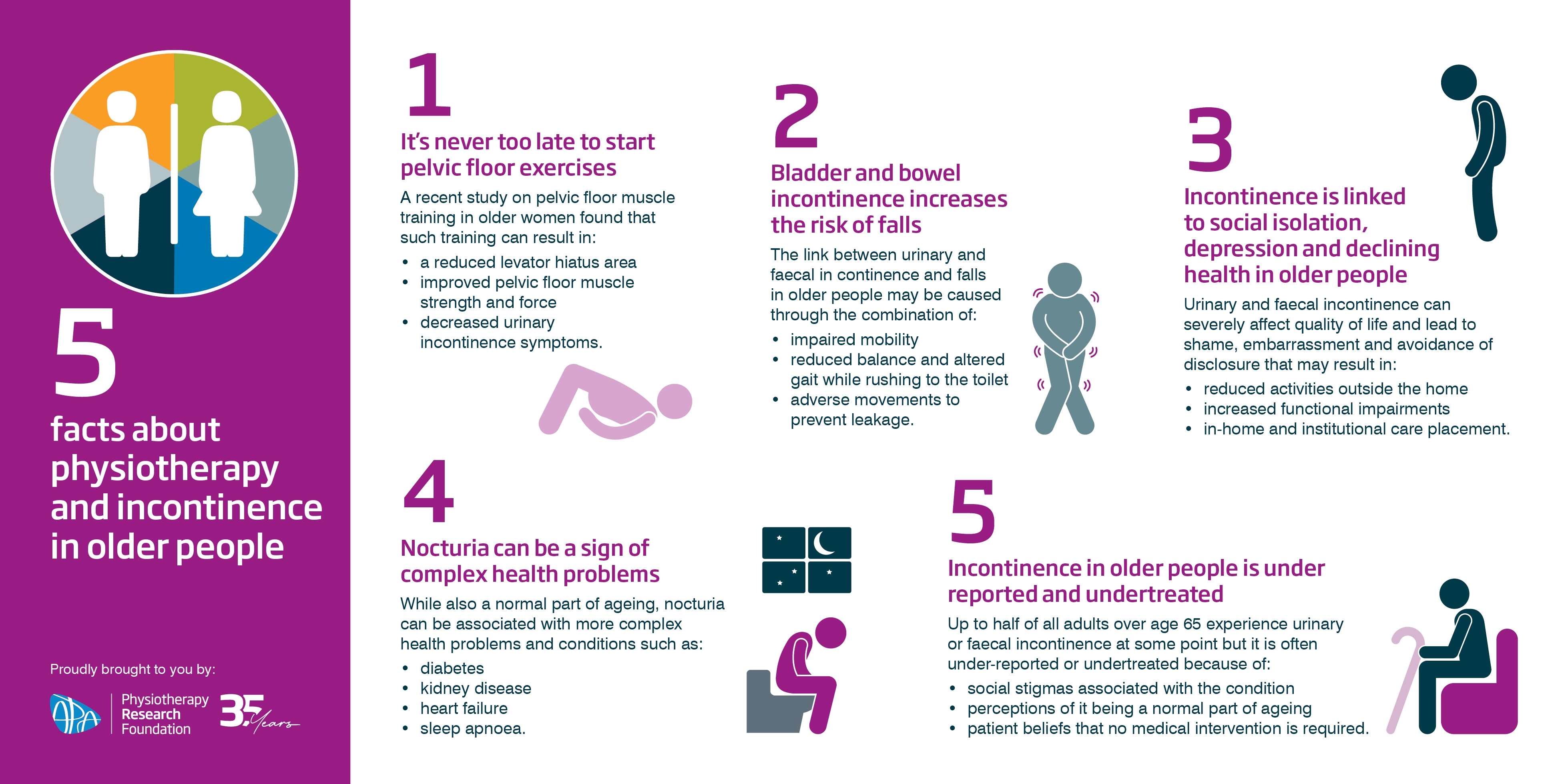Five facts about physiotherapy and incontinence in older people
Studies have shown that up to 50 per cent of adults over 65 experience urinary or faecal incontinence at some point in their lives. It is a common condition that is often under-reported and undertreated. Ageing and menopause have been linked to muscle atrophy and reduced pelvic floor muscle strength, and despite being the recommended first-line treatment for urinary incontinence, pelvic floor muscle training is not always recommended to older patients, who are more often treated with medications or surgery.
The Physiotherapy Research Foundation (PRF) has highlighted key messages from the 5 facts article featured in the June edition of InMotion and produced this infographic.
Click on the image below to access a printable A3 file.
About the authors.
Lauren Neill APAM MACP is an APA Women’s, Men’s and Pelvic Health Physiotherapist and the owner of and senior physiotherapist at Women’s Health Physio Mackay. Sarah Myles APAM is a physiotherapist at Townsville University Hospital working in women’s, men’s and pelvic health.
Leanne Slater APAM is a physiotherapist in Brisbane with a special interest in pelvic health. She has completed her Master of Clinical Physiotherapy (Continence and Women’s Health) at Curtin University and is currently working at the QLD Pelvic Floor Centre.
This infographic is a Physiotherapy Research Foundation (PRF) initiative supported by FlexEze – partner of the PRF.


